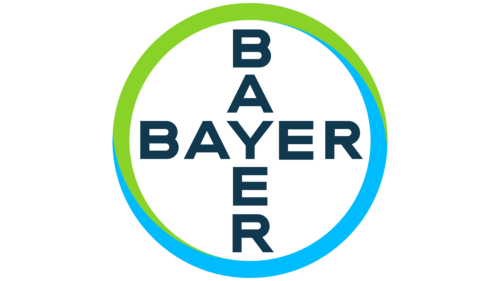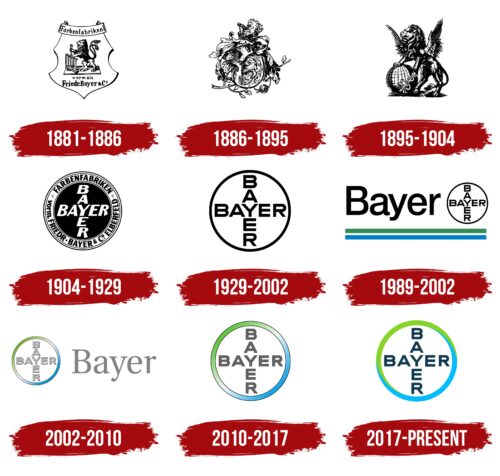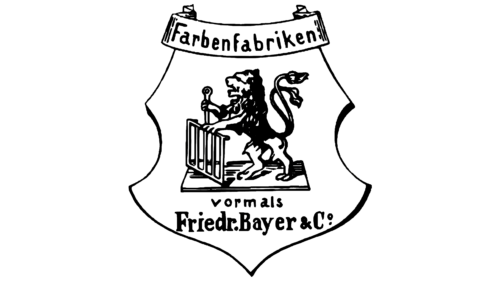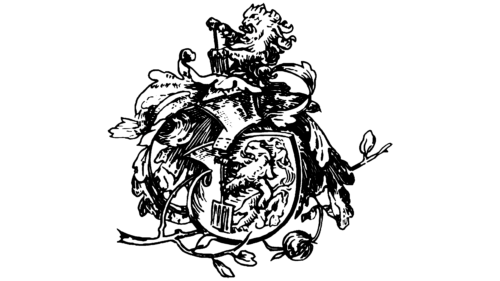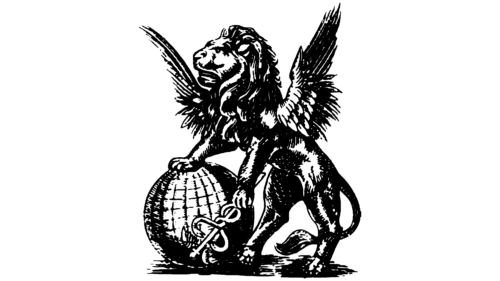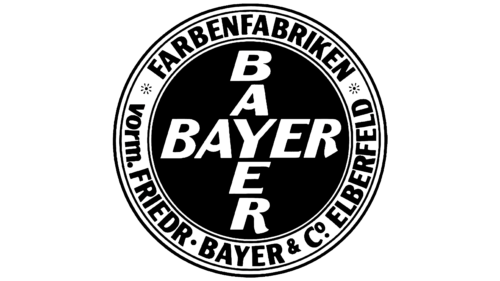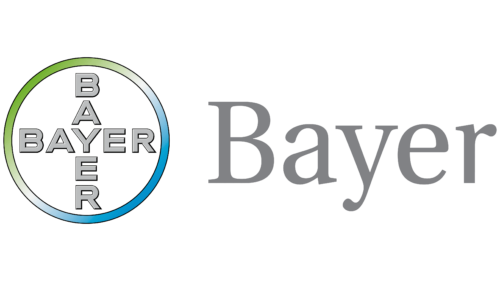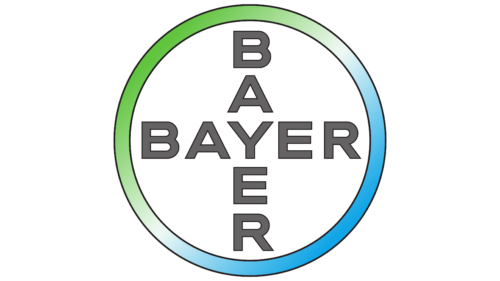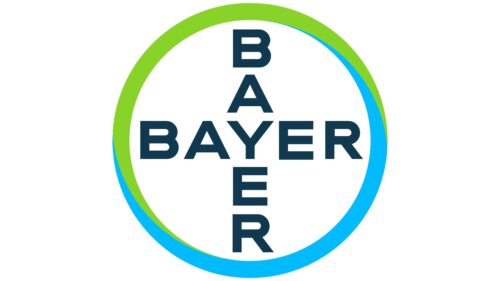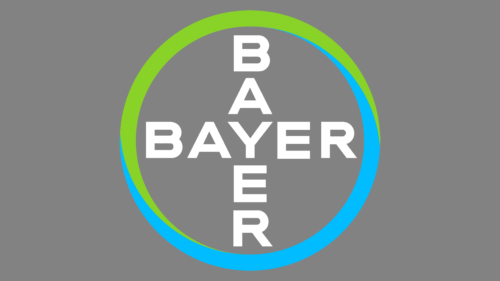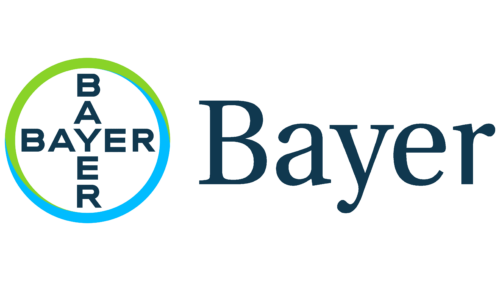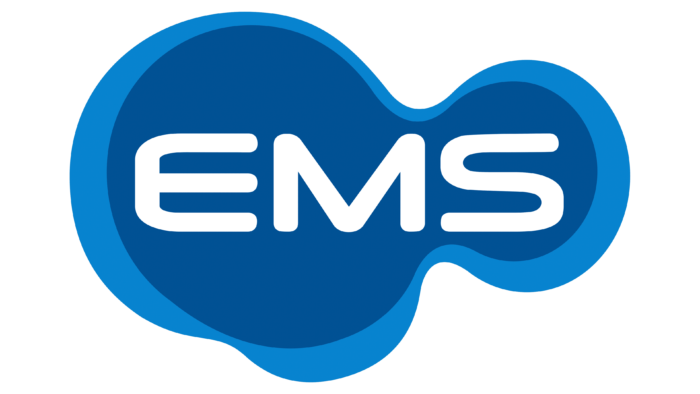The German concern, which produces a wide variety of products, is forced to use a universal emblem so that it fits all products. This explains why the Bayer logo is so neutral. On the other hand, it has hidden medical symbols that indicate the brand’s connection with pharmaceuticals.
Bayer: Brand overview
| Founded: | 1 August 1863 |
| Founder: | Friedrich Bayer |
| Headquarters: | Leverkusen, North Rhine-Westphalia, Germany |
| Website: | bayer.com |
Bayer is a German pharmaceutical concern with a turnover of 44 billion euros. The conglomerate employs about 100 thousand employees—headquarters in North Rhine. The Bayer logo brings together 374 companies.
The joint work of the scientist Johann Westcott and the merchant Frederick Bayer went well from the beginning. They opened a paint factory in 1863, and over 160 years, they gradually took over the markets for medicines, cosmetics, dietary supplements, and agricultural products.
Meaning and History
The company has changed its logo many times. However, after the appearance of the idea with a cross, which falls at the end of the 19th – the beginning of the 20th century, it has always been present on the emblem and has become a real trademark of the brand.
What is Bayer?
A large holding was founded in Germany in 1863. It produces fertilizers, medicines, paints, cosmetics, and dietary supplements.
1881 – 1886
The production opened in 1863 and consisted of 3 people. Only by 1881, when the company became a joint-stock company, attracted third-party capital, opened branches in America and Russia, and grew to 100 employees, was the first logo created. His regal features predicted a great future for the enterprise.
The emblem is made in the form of a heraldic shield. His image is inextricably linked with the coat of arms of Elberfeld, the city where the company was formed. On the shield in the center is a rising two-tailed lion. He holds the bars with his paws. On it, according to legend, a saint who became the patron of the city was martyred. The lion symbolizes the victory of the spirit over death and torment. It indicates the firmness and reliability of the company.
At the very top of the logo is a heraldic ribbon. On it is a part of the enterprise’s name, indicating the occupation: Farbenfabriken (paint factory). And below the lion, the continuation of the name simultaneously indicates the founder of the company: Friedr. Bayer (Frederick Bayer).
1886 – 1895
It was decided to add pharmaceutical preparations to the production of dyes and demonstrate this in the logo. However, the desire to put as much information as possible on the emblem made it very busy and unclear.
At the base of the image is a branch of a plant that indicates pharmaceuticals. Its leaves and berries are twisted into a wreath.
Inside, surrounded and partly covered with leaves, is the coat of arms of the city of Elberfeld. Its location at the heart of the composition is a prototype of the origin and the central place from which the company’s products are distributed worldwide.
A gentleman’s hat is worn on top of the coat of arms—a sign of honest and decent founders who know how to conduct business.
Above the entire composition in the background is the torso of another lion with bars. Now he patronizes the company, as well as the city.
1895 – 1904
In 1992, Bayer released the first insecticide, entering the agricultural market. In the logo of this time, the lion symbolizes the company and acquires wings. He holds a scepter of medicine in one paw, and the other rests on the globe. He is the prototype of strength, power, and development. Bayer – conquers the world.
1904 – 1929
In the late 19th century, the company made a significant breakthrough with the registration of Aspirin (1899) and the development of cough medicine (future heroin, 1898). The drugs made her famous all over the world. After these discoveries, a new logo appeared.
The idea belongs to the scientist G. Schneider, who depicted the cross in 1900. Such a representation simplified the perception of a complex and long name abroad and made the company recognizable.
The round shape of the logo is a symbol of a pill. The double spelling of the word Bayer vertically and horizontally shows the growth and expansion of the company. It grows upwards, improving the quality of products, outperforming competitors, and improving its offer. And it spreads in breadth, capturing new areas of activity and opening new offices and markets everywhere.
The logo was a painted prototype of Aspirin, as each tablet was marked with a cross-shaped name.
1929 – 1989
In 1925, Bayer’s dye companies merged with Farbenindustrie to form the Farben concern. The headquarters is in Leverkusen, and the Bayer logo has become common. The original cumbersome company name disappears from it, and the black background changes to white, which makes the image more welcoming. The circle becomes a symbol of unification.
1989 – 2002
Rebranding issues were in the background for a long time, as the Bayer leadership after the war was sentenced by the Nuremberg Tribunal to prison terms for using the labor of concentration camp prisoners and experiments on people. Restoring the business and the name took time. By the end of the 80s, all unprofitable enterprises had to be sold and staff reduced. The new logo has become a symbol of a new beginning.
The main feature is the addition of color. The blue (water, cleansing) and green (new life) stripes separated the company’s past from its future. Now everything will be built on a clean foundation and for life. The triple use of the name spoke of three areas of work: agricultural, pharmaceutical, and industrial.
2002 – 2010
In 2001, the restructuring of the conglomerate began. All areas of Bayer become independent and linked within the holding. As a result, the rebranding of the logo.
The emblem gets volume. A hoop surrounds the cross painted blue and green with white spaces in between. Each color symbolized one of three areas: blue – industry, white – medicine, and green – agricultural business. The white gaps also showed the separation of the giant.
The visual part with a circle and a cross is placed in front of the inscription, showing that the company is changing, leaving the previous device behind.
2010 – 2017
In the 2010s, the company is actively engaged in developments that reduce the environmental burden.
Like Bayer’s emissions into the atmosphere, the logo is becoming minimalistic: a circle with a cross. The name was given more color, showing the significant role of the corporation in the world.
2017 – today
Bayer is preparing to merge with the largest biotech company in the agricultural sector Monsanto, which was completed in 2018. A similar breakthrough was marked by a change in the logo.
The dense combination of blue and green colors in the circle’s edging and getting rid of the borders of the stroke shows close cooperation and association with other giants for the well-being of all.
Font and Colors
Primary colors:
- Blue – pursuing dreams, good goals and intentions, and scientific research.
- Light green – life, development, growth, health.
- Black – power, solidity, global scale.
The font of the inscription inside the emblem is Tapas Sans.
Bayer color codes
| Prussian Blue | Hex color: | #10384f |
|---|---|---|
| RGB: | 16 56 79 | |
| CMYK: | 80 29 0 69 | |
| Pantone: | PMS 3035 C |
| Deep Sky Blue | Hex color: | #00bcff |
|---|---|---|
| RGB: | 0 188 255 | |
| CMYK: | 100 26 0 0 | |
| Pantone: | PMS 306 C |
| Yellow Green | Hex color: | #89d329 |
|---|---|---|
| RGB: | 137 211 41 | |
| CMYK: | 35 0 81 17 | |
| Pantone: | PMS 802 C |
